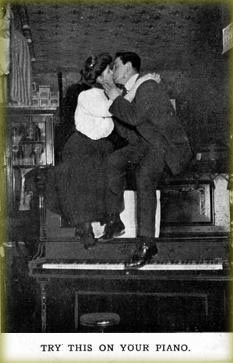Philip Jamison Pianos
since 1971
Philip Jamison Pianos
West Chester, PA
610-696-8449
 |
|
Yes. I can often give you an idea of cost over the phone at no charge. If a housecall is necessary, the charge depends on your location. Any fee will be subtracted from the final charge. Some technicians offer "free" estimates, but charge three times what I do, so beware!
Maybe! I'll give you an honest appraisal before I do any work. Not every piano is worth an extensive restoration, but the sale price may not be the determining factor. If you love your piano, it may be well worth maintaining.
Must You Take My Piano To Your Shop For Repair?
Usually not. Only extensive repairs such as restringing, pinblock replacement, and refinishing require moving the piano. These costs are included in the estimate. We do our own piano moving, so you will save money.
Some Common Piano Repairs
Old, chipped piano keys can be recovered to look like new. Pianos made before WWII usually had ivory key tops, but today we use molded plastic. It is possible to recover keys with ivory or bone (which resembles elephant ivory), however. This ivory was harvested prior to the current laws forbidding importation. The cost is up to 10X that of plastic ($1500-$2500), but may be well worth the cost on a valuable instrument.
Pianos can be restrung just like guitars or violins. Piano strings last much longer, however, as they are not plucked or handled, and are much more massive. If strings are rusty or in poor comdition, they may need to be replaced. Often, a new set of bass strings will improve tone, as dirty, corroded strings do not vibrate freely.
Tuning pins rarely need replacement, but are generally renewed during restringing. Tuning pins may be either nickel-plated or "blued". They come in various lengths and diameters. Sometimes, a thicker pin may cure a piano with loose, unstable tuning pins. One must be careful, however, as larger pins will not work if the pinblock is in very bad condition.
It is not always necessary to replace tuning pins or the pinblock. Loose tuning pins may be repaired by chemical or other means at a lower cost. I can examine your piano and tell you if this is possible.
For pianos with loose tuning pins, the ultimate repair is a new pinblock. A pinblock is simply a piece of maple plywood into which the tuning pins are driven. If the block splits or comes unglued, the pins loosen and will not hold a tune. Severly damaged blocks can be replaced. This repair requires all the strings to be removed from the piano. After this, the cast iron "plate" is removed to reveal the pinblock. Then old block is removed (sometimes, it must be cut out) and a new one custom-fitted in its place with new holes drilled for the tuning pins. Each piano is diferent, and each block must be carefully cut and planed to fit perfectly.
Pianos generally have two "bridges": a treble and a bass bridge. A piano bridge is the same as a violin or guitar bridge: a piece of wood (usually maple) which transmits the vibrations of the strings to the soundboard. Of course, a piano bridge is much more massive than a guitar's, but the principal is the same. A bridge can develop cracks or become unglued from the soundboard. These defects can cause annoying sounds in certain strings, or a "dead" tone. , expecially in the bass. Fortunately, bridges can be repaired or replaced.
The "soundboard" is the large piece of wood underneath the strings (or behind them in an upright). It acts just like a loudspeaker cone to amplify the motion of the strings into a listenable sound. The larger the soundboard, the louder the tone. If a soundboard is loose, badly split or warped, the sound diminishes or is distorted. Contrary to popular rumor, soundboard cracks rarely spell doom to a piano! A few cracks will not damage piano tone unless they are very loose. In that case, they can be repaired at a low cost. On better pianos, a new soundboard can really improve tone, however. The soundboard has a "crown", meaning that it is not perfectly flat, but rises in the center. This pushes the board against the strings. Improved crown can really improve tone, but a new soundboard (always done along with restringing) can add about $4,000-$5,000 to the restoration cost. For a high-end piano worth $20-30 thousand, however, it may be well worth it!
The piano "action" is the mechanism the strikes the strings to produce sound. Every piano action has thousands of parts, mostly of wood, felt and leather. Obviously, these are subject to wear and breakage. The amazing thing is that they are so durable! Fortunately, most parts are still produced, and many obsolete parts are repairable. Most "broken" or stuck notes can be repaired for a few dollars... it's not very expensive, especially if you combine the repair call with a tuning.
"Regulation" of the piano action involves setting all the thousands of parts to their optimal relationship to each other. It begins with the distance from the hammer to the string, the height of the keys, how far the fingers can push down the keys, etc. A complete action regulation is a painstaking job. It may take several days! A "partial" regulation is often all that is needed to improve playing, however. This may be done during a service call along with a tuning. Look down the tops of your keys. All they all perfectly level, or do they go up and down? Do some notes hit the string more than once when you ply them? Do some notes repeat poorly? These are all signs of a piano needing regulation.